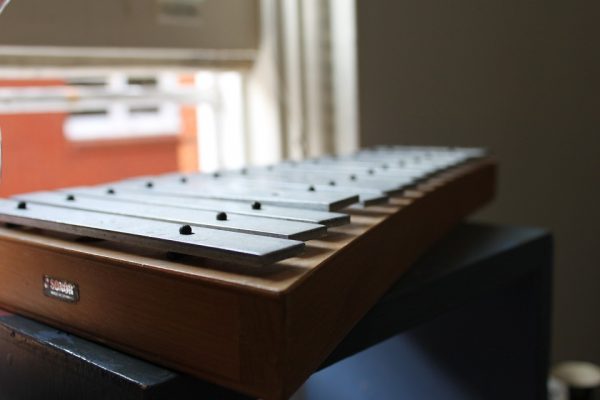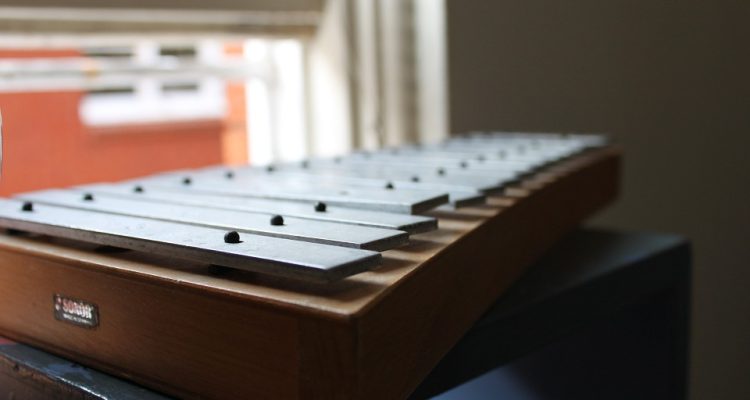In the late 1950s, my brother, Terry, often found time on his hands to explore the dusty back rooms and storage closets of long-abandoned but safe South and Center Wheeling storefronts. On one of those explorations, he made a life- altering discovery.

Every month, the Sightless Workers Guild of Wheeling and its merry band of blind members held a meeting complete with a business agenda, raised number bingo boards for post-business recreation, and refreshments in some vacant old storefront or office space somewhere in the Friendly City.
Since our mother, Mabel, and her mother, Lizzie, were founding members of the organization dedicated to advancing the causes of blind people, Terry, and later me when I was old enough, were hurried into the big old family sedan for the ride from Elm Grove to a designated Wheeling location when the meeting time rolled around. While the adults tended to their business meeting and social exercises under the leadership of our family’s old friend and boogie-woogie piano genius Chris Cerone, Terry had the time and the freedom to do some exploring—at least until refreshments were served.
On one warm summer evening when Terry was perhaps 7 or 8, he was in exploration mode in the back room of a dusty old storefront maybe on Jacob Street, maybe on 27th Street, or maybe in any one of the other dozen or so places where our socially-focused nomadic elders were compelled to gather. His accomplice in the urban expedition that night was a Kruger Street School classmate who had come along to keep Terry company while the adults met in the next room. In poking around a dark dingy storage room amid the dusty rotting furniture where dead flies crunched under their feet and the air was musty and thick, Terry ran across something that caught his attention.
It was leaning against a filthy back wall. It had what looked like cardboard close-ended grey tubes of varying lengths sticking out of a flat surface that had four legs that were folded up like a card table. Terry grabbed the top end and pulled it forward so he could see the other side. The other side had little wooden slabs of different lengths that were centered over each of the grey tubes. The wood was smooth to the touch, but worn down from being hammered with something firm but soft.
“You know what I think this is?” Terry asked his companion as he pulled the object to the center of the room where there was more space for examination.
“No,” his classmate responded. “A magic eating table?”
“A what? No. It’s called a marimba you goof,” he said. “You know, like what they play on that corny Lawrence Welk show that our parents always make us watch on Saturday nights.”
“I hate that show,” he said.
“Yeah I know, so do I,” Terry responded. “But I have to admit that marimba stuff is kind of neat.”
He unfolded the four legs and set the contraption up so the wooden slabs were facing up and the tubes were facing down. He looked around the room and picked up a couple old pieces of wood he found on the floor. He struck a slab and a wooden note came out of the marimba.
“On TV, they use some kind of sticks with balls on the end to hit these slabs and that makes the noise,” he explained just as his friend’s attention span was beginning to wane.
Just then, they got the call from out front to come out for the donuts and pop and Terry returned the beat up old musical instrument to its position against the wall.
On the way home that night, Terry chattered on and on to Mom and Grandma about his discovery. He was clearly excited about it. While her closed and blinded eyes kept us from detecting when Grandma’s mental wheels were turning, there were other ways to tell. She drew one side of her mouth up, fidgeted with her hands and brushed her hair back on one side. Clearly, she was cooking up a plan.
The plan became clear about a month later when a truck pulled up in front of our house from Ceo’s Music Store. After being ushered in the house by my Mom, the delivery man proceeded to set up one of those marimba things right in our dining room that looked a lot like the one Terry found in that old building, only this one was shiny and clean. Grandma had put the word out and located an inexpensive used marimba, paid for it, and arranged for its delivery. She also found a marimba teacher named Mrs. Sibold who taught eager young students in her house down on Wood Street near Ritchie School.
Terry began lessons a week later and continued for the next five years every Saturday morning. Before long, he was hammering out ditties like “March of the Wooden Soldiers” and other classics of the marimba novice’s workbook. We didn’t know it at the time, but for Terry, this simple little instrument was the spark for a life he would joyously spend on stage as a performer at venues large and small for the next 55 years—but just not on the marimba.

By his eight-grade year at Bridge Street School, Terry followed his musical urge and presented himself to marching band director Pete Ashkin, a popular young music teacher and ace jazz drummer in his own right. Ashkin, who was also the band director at Triadelphia High School, put an odd-looking all-silver instrument called a glockenspiel in Terry’s hands.
“It’s basically a little version of a marimba that you can play in the marching band,” Ashkin said. “And I want you to play with the high school band.”
But high school football games, Wheeling Christmas Parades and concerts in Triadelphia High’s old wooden auditorium weren’t quite enough to satisfy the budding performer’s spirit. Terry came up with the idea of starting a little band of his own with the marimba at the center of the action. He asked some of his new older friends to join. It started out with a trumpet player and a sax player and, in a unique approach, two drummers. But the trumpet and sax players lost interest and wandered off. The remaining trio, Terry and drummers Dave Woeber and Ray Griffith (no relation) dubbed themselves “The Tornados” and even had a little electric top-lit three-foot by four-foot hand painted Tornado sign crafted with red and green lightning bolts and a little suitcase handle at the top for easy transportation.
They rehearsed in our little basement of the house on Columbia Avenue while Grandma sat in her big gold-covered upholstered rocking chair and crocheted. What started out as noise eventually took the form of rhythm and melody and Grandma smiled.

Eventually, the Tornados were in big demand at women’s clubs, church meetings, school assemblies, and other social gatherings around Wheeling. Then, the Brits ruined the whole thing. In late 1962, an instrumental science-fiction sounding song called “Telstar” hit the airwaves and topped the charts. The band that put it out had the gall to call themselves the Tornados.
Terry and the Wheeling Tornadoes were devastated. Their budding career cut down in its prime, leaving women’s clubs and church groups stunned and in the lurch for entertainment. With the demands of high school looming, it was just too tough to keep the guys together, rebrand, and start anew. The Tornados were no more. That hand-painted Tornadoes sign languished in our Elm Grove basement for about 30 years until someone finally had the nerve to pitch it in the trash.
Eventually, Terry moved on and began to show interest in singing and the marimba was just not the instrument for accompaniment. He turned to the guitar, and that’s when his musical story really took off. But that’s another story from the Griffith Files.




